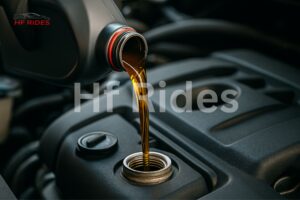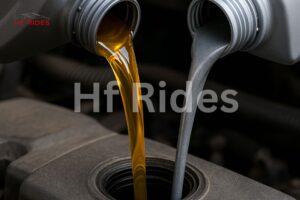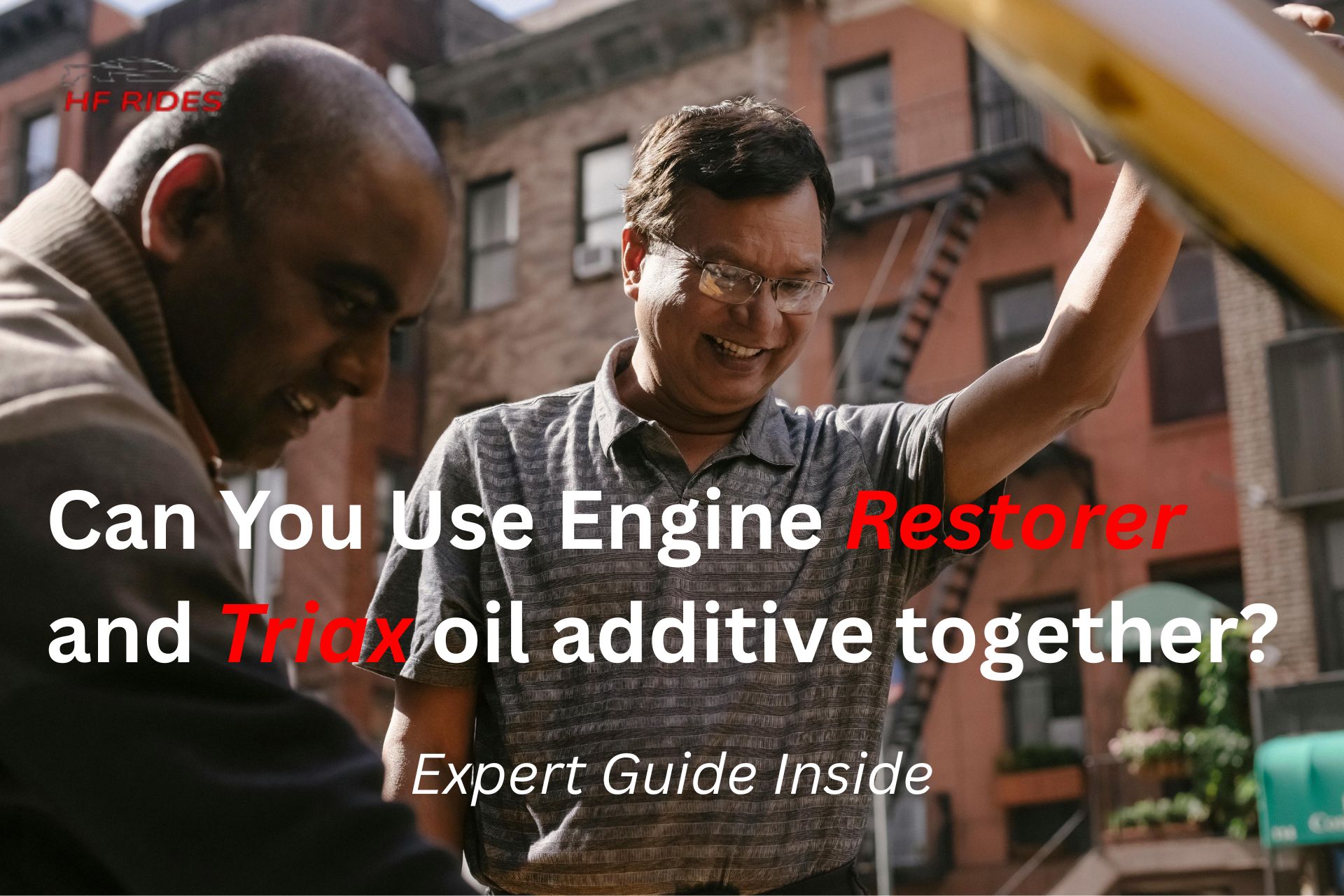Introduction
As you know, we are researching on the Car Maintenance niche. We are trying to cover all the queries people are searching for, we are trying our best to give you the working solution for your problems or the information you are trying to get. or curious about, today we have answered a most searched query Can I use engine restorer and Triax oil additive together?. Well you’re not alone thinking about this many owners look to oil additives to restore engine performance, reduce wear, or boost the lubrication. But before you mix two lubricants together we have to make sure that is it safe or not?.
In this guide we will cover all the things you need to know, from how the each additive works to are they safe to mix together? or whether you drive a high mileage car or just want the engine to perform smoother, understanding How oil additives work together is the key.
What is engine Restorer?
Engine Restorer is an oil additive made to bring worn engines back to the life. It works by filling in small scrapes wear in the cylinder walls, helping restore lost compression and reduce engine noise. Many car owners use it in high mileage rides to improve performance and extend life of the engine. It contains metal particles and friction modifiers that seal the gaps and make internal parts smooth, makes the engine more efficient and quiet.
What Is Triax Oil Additive?
Triax oil additive is a high performance solution made to improve engine oiling and protect against wear. it offers:
- Friction reduction : Helps parts move smoothly, reducing engine strain.
- Friction reduction : Helps parts move smoothly, reducing engine strain.
- Oxidation resistance : keep the oil stable at the high temperature.
- Cleaning power : Removes mud and deposits over time.
Triax oil is often used with synthetic oils and works good in both modern and older engines. It is popular for improving oil film strength and overall engine efficiency.

Are Engine Restorer and Triax Compatible?
Yes, in most cases, you can safely use both engine restorer and triax oil additive together. These products serve different functions. engine restorer helps restore compression and seal the worn metal surfaces, while triax improves greasing enhance the oil film strength, and protects against oxidation and Mud build up.
They are generally chemically compatible, means that they would not cancel each other out. However, always check the engine type and all the specifications, especially if ypur car uses synthetic oil, has variable valve timing VVT or a turbocharged engine.
Key Benefits of Combining Additives
Using engine restorer and Triax oil additive together can offer several real world advantages, especially for the high mileage vehicles.
Improved compression :
Engine restorer fills worn cylinder walls, boosting power and reducing blow by.
Better lubricaton :
Triax improves oil film strength, reduces friction between engine parts
Smoother idle and quieter operation :
Many car owners report less engine noise after combining the additives.
Extend oil life :
Triax help right oxidation and thermal breakdown Cleaner internals : Additive reduce Mud, Carbon deposits, and vanish build up over time.
Potential Risks of Mixing Oil Additives
While many users combine engine restorer and Triax oil additive without any issue, but there are few important risks to consider:
- Over dosing : Using too much additive an alter oil viscosity, potentially reduce the flow and strain engine parts.
- Filter clogging : engine restorer contains metal particles that may block oil filters, especially in High Performance or VVT systems like VANOS OR VTEC.
- Additive conflict : Some formulas may overlap, causing chemical reactions that reduces effectiveness.
- Warranty issues : Using OEM Additives might void the engine warranties in certain cases.
Pro tip:
Always follow vehicle’s manufacturer’s dosage guidelines, avoid stacking multiple additives, and monitor your engine’s performance after application.

Additive Chemistry – Understanding the Science
To understand how engine restorer and triax oil additive work together, it helps to look at their chemistry. Engine restorer contains metallic particles like copper and zinc that fill microscopic wear in the cylinder walls, restoring compression. These particles bond with surfaces under heat and pressure.
Triax, on the other hand, uses friction modifiers, anti wear agents, and detergents that improve oil film strength and prevent Mud.
The key is chemical compatibility. Both additives are made to work in engine oil environments without breaking down. But adding too many treatments can affect viscosity, TBN levels (Total Base Number), and cause additive saturation, making your oil less effective.
In short, these additives can complements each other. But only if used in proper amounts and with the right type of oil.
Additive Layering Techniques – How to Apply Them Safely
to safely use engine restorer and Triax oil additive together, it’s important to follow a proper additive layering technique. Here is a step by step process:
- Start with an oil change : Always use clean fresh oil before adding any solutions.
- Add engine restorer first : Since it contains heavy metallic particles, you have to put it in before the Triax.
- Follow with Triax : Pour it in after the restorer to enhance lubrication and improve oil flow.
- Use the right amount : just don’t overdo it try to keep the amount of additives under ten percent of your total oil volume so the oil stays at the right thickness.
- Run the engine : after adding them let your engine idle for about ten to fifteen minutes this gives the oil time to flow and mix everything properly.
- .Monitor performance : keep an eye on things listen for any weird sounds watch the oil pressure and check if the engine’s running hotter than usual.
Vehicle Types – Should Everyone Use Additives?
Not all the engines respond the same way to oil additives. Here is what to know before using engine restorer and Triax together :
High mileage engines :
These benefit the most, especially if there is a wear, low compression, or noisy operation.
Turbocharged engines :
: Additives like the Triax can help with thermal protection and oiling, but always follow oil specs.
Engines with Variable Valve Timing (VVT/VANOS/VTEC) :
Metallic particles from the engine restorer can clog tight oil passages or solenoids, always use with caution.
Hybrid engines or newer models :
Often don’t need additives, especially when using full synthetic oil with built in protection.
If you are unsure about anything, Check your owner’s manual.

Conclusion : Should You Mix These Additives?
So, can you use engine restorer and Triax oil additive together? Yes, but when done properly, combining them can improve compression, enhance greasing, and extend the life of a high mileage engine.
They are not magic fixes. Use them wisely : follow correct dosage, apply with clean synthetic oil, and do not overuse. These additives are best for engines showing signs of wear, not for new or factory tuned systems.
When used correctly, they offer a smart low cost way to restore engine performance and reduce friction related issues all without major repairs.
FAQ’s
Can I mix other additives too?
Not really, a good idea unless you know for sure they’re meant to work together. Some additives can cancel each other out or even make your oil too thick which can mess with how your engine runs.
Will this void my warranty?
It might, if your car is still under warranty it’s best to check your manual or ask your dealership before adding anything outside what the manufacturer recommends.
How long do the effects last?
Usually the results hold up for around three to five thousand miles depending on how you drive and the shape your engine’s in does it fix engine.
Does it fix engine knock?
it can help reduce the noise if it’s from wear or poor lubrication but if the knock is from deeper mechanical problems this won’t be a magic fix.
Should I use it every oil change?
Find deeper knowledge about the car fluids here : thedrive.com
Read our latest article : HOW LOND DOES IT TAKE TO PAINT A CAR?

